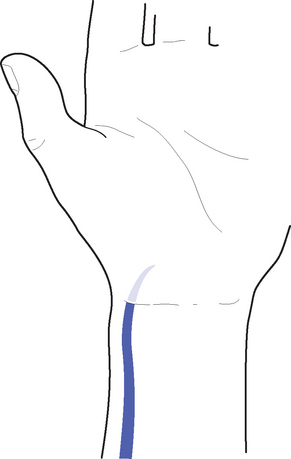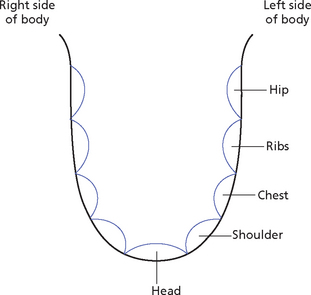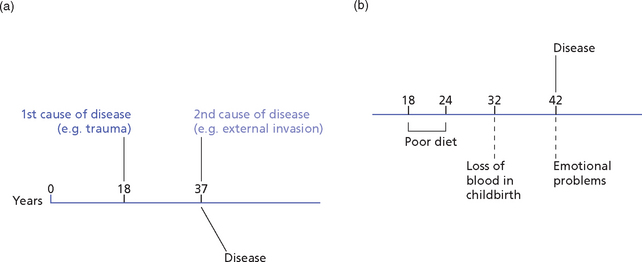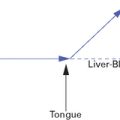 DIAGNOSING THE CAUSES OF DISEASE
DIAGNOSING THE CAUSES OF DISEASE
INTRODUCTION
Traditionally the causes of disease were differentiated according to three broad categories: external (due to climate), internal (due to emotions), and miscellaneous. Nowadays, this classification is no longer relevant (not least because some of the most important causes of disease are in the ‘miscellaneous’ group) and we need not follow it. The main causes of disease, listed in approximate order of their importance and frequency are:
I find that, when identifying a cause or causes of disease, it is helpful to divide a person’s life into five distinct ages (see below). Because each cause of disease is more prevalent during a certain period of life, establishing when the cause arose helps us to identify the disease. There seldom is only one cause of disease; nearly always a disease results from the combination of at least two causes. Usually one cause occurs at a certain point of the patient’s life, then, some years later, another cause intervenes and the combination of the two triggers a disharmony (Fig. 48.1). Some examples will be given below.
INTERACTIONS BETWEEN CAUSES OF DISEASE
Interaction of emotional problems at puberty and overwork
A girl suffers deep emotional traumas around the time of puberty, owing to family conflicts. These have no apparent effect until she is an older woman. At the age of 27 she is working very hard and for very long hours; the emotional problems at puberty (which affect the Directing and Penetrating vessels) interact with the overwork later in life to cause gynaecological problems, possibly endometriosis.
THE FIVE STAGES OF LIFE
The patient’s life can be differentiated into five stages:
Young adulthood
Leaving home often coincides with a deterioration in the young person’s dietary habits characterized by irregular meals, eating ‘fast foods’, and often becoming vegetarian. When practised without a proper understanding of nutrition, a vegetarian diet may lead to Blood deficiency, especially in girls. Therefore, digestive problems later in life often have their root in the early 20s.
THE CAUSES OF DISEASE
Heredity
The constitutional body condition inherited from our parents depends on three factors:
Weak-Lung constitution
Manifestations of this constitution include a white complexion, fear, shyness, proneness to colds, whooping cough, asthma and eczema, a thin chest, a ‘special’ Lung pulse (Fig. 48.2) and Lung cracks on tongue.

Fig. 48.2 Special Lung pulse
Weak-Heart constitution
In pregnancy, this constitution may be caused by the mother’s suffering a shock.
Weak-Liver constitution
Manifestations of this constitution include myopia or headaches from an early age; the child may be very tense with a sinewy body, nocturnal enuresis, restless sleep, twitching in sleep, screaming during sleep, feeding a lot as a baby, hungry as a child, short-tempered, a Wiry pulse and a Red tongue with coating.
In pregnancy, this constitution may be caused by the mother’s emotional stress and anger.
Emotions
The ‘Spiritual Axis’ in Chapter 8 clearly illustrates the reciprocal relationship between the emotions and the Internal Organs. It says: ‘The Heart’s fear, anxiety and pensiveness injure the Mind … the Spleen’s worry injures the Intellect … the Liver’s sadness and shock injure the Ethereal Soul … the Lung’s excessive joy injures the Corporeal Soul … the Kidney’s anger injures the Will-Power…’.1 On the other hand, further on it says: ‘If Liver-Blood is deficient there is fear, if it is in excess there is anger … if Heart-Qi is deficient there is sadness, if it is in excess there is manic behaviour …’2
The emotions taken into consideration in Chinese medicine have varied over the years. From a Five-Element perspective, the ‘Yellow Emperor’s Classic’3 considered five emotions, each one affecting a specific Yin organ:
However, these are not by any means the only emotions discussed in the ‘Yellow Emperor’s Classic’. In other passages sadness and shock are added, giving seven emotions:
Other doctors considered other emotions such as grief, love, hatred and desire (craving).
Thus, the list of emotions could be expanded as follows:
The effect of each emotion on a relevant organ should not be interpreted too restrictively. There are passages from the ‘Yellow Emperor’s Classic’ that attribute the effect of emotions to organs other than the ones just mentioned. For example, the ‘Spiritual Axis’ in Chapter 28 says: ‘Worry and pensiveness agitate the Heart’.4 The ‘Simple Questions’ in Chapter 39 says: ‘Sadness agitates the Heart…’5
Fei Bo Xiong (1800-1879) put it very clearly when he said:
The seven emotions injure the 5 Yin organs selectively, but they all affect the Heart. Joy injures the Heart … Anger injures the Liver, the Liver cannot recognize anger but the Heart can, hence it affects both Liver and Heart. Worry injures the Lungs, the Lungs cannot recognize it but the Heart can, hence it affects both Lungs and Heart. Pensiveness injures the Spleen, the Spleen cannot recognise it but the Heart can, hence it affects both Spleen and Heart.6
Yu Chang in ‘Principles of Medical Practice’ (1658) says: ‘Worry agitates the Heart and has repercussions on the Lungs; pensiveness agitates the Heart and has repercussions on the Spleen; anger agitates the Heart and has repercussions on the Liver; fear agitates the Heart and has repercussions on the Kidneys. Therefore all the five emotions [including joy] affect the Heart’.7 Chinese writing clearly bears out the idea that all emotions affect the Heart since the characters for all seven emotions are based on the ‘heart’ radical.
Each emotion is said to have a particular effect on the circulation of Qi. The ‘Simple Questions’ in Chapter 39 says: ‘ Anger makes Qi rise, joy slows down Qi, sadness dissolves Qi, fear makes Qi descend … shock scatters Qi … pensiveness knots Qi …’8 Dr Chen Yan in ‘A Treatise on the Three Categories of Causes of Diseases’ (1174) says: ‘Joy scatters, anger arouses, worry makes Qi unsmooth, pensiveness knots, sadness makes Qi tight, fear sinks, shock moves.’9
Again, this should not be taken too literally as, in certain cases, emotional pressure may have a different effect on Qi from the one outlined above. For example, fear is said to make Qi descend and it may cause enuresis, incontinence of urine or diarrhoea, since the Kidneys control the two lower orifices (urethra and anus). This is certainly true in cases of extreme and sudden fear, which may cause incontinence of urine or diarrhoea, or in the case of children when anxiety about a certain family situation may cause enuresis. However, the effect of fear on Qi depends also on the state of the Heart. If the Heart is strong, it will cause Qi to descend, but if the Heart is weak, it will cause Qi to rise in the form of Empty-Heat. This is more common in old people and in women. In such cases, fear and anxiety may weaken Kidney-Yin and give rise to Empty-Heat of the Heart with such symptoms as palpitations, insomnia, night sweating, a dry mouth, red face and a Rapid pulse.
Box 48.1 summarizes the relationships between the seven emotions and the Internal Organs.
Let us now discuss the effects of each emotion individually.
Anger
The ‘Simple Questions’ in Chapter 39 says: ‘Anger makes Qi rise and causes vomiting of blood and diarrhoea.’10 It causes vomiting of blood because it makes Liver-Qi and Liver-Fire rise and diarrhoea because it induces Liver-Qi to invade the Spleen.
Finally, anger, like all other emotions, also affects the Heart. This organ is particularly prone to be affected by anger also because, from a Five-Element perspective, the Liver is the mother of the Heart and often Liver-Fire is transmitted to the Heart giving rise to Heart-Fire. Anger makes the Heart full with blood rushing to it. With time, this leads to Blood-Heat affecting the Heart and therefore the Mind. According to Dr J. H. F. Shen, anger tends to affect the Heart particularly when the person does a lot of jogging or exercising; this is because excessive exercise dilates the heart, which is then more prone to be affected by the transmission of Fire from the Liver to the Heart.
Box 48.2 summarizes the effects of anger.
Joy
A normal state of joy is not in itself a cause of disease; on the contrary, it is a beneficial mental state which favours a smooth functioning of the Internal Organs and their mental faculties. The ‘Simple Questions’ in Chapter 39 says: ‘Joy makes the Mind peaceful and relaxed, it benefits the Nutritive and Defensive Qi and it makes Qi relax and slow down.’11 On the other hand, in Chapter 2 the same book says: ‘The Heart … controls joy, joy injures the Heart, fear counteracts joy.’12
Joy may also be marked out as a cause of disease when it is sudden; this happens, for example, on hearing good news unexpectedly. In this situation, ‘joy’ is akin to shock. Fei Bo Xiong in ‘Medical Collection from Four Families from Meng He’ says: ‘Joy injures the Heart … [it causes] Yang Qi to float and the blood vessels to become too open and dilated…’13 In these cases of sudden joy and excitement the Heart dilates and slows down and the pulse becomes Slow and slightly Overflowing but Empty. One can understand the effect of sudden joy further if one thinks of situations when a migraine attack is precipitated by the excitement of suddenly hearing good news. Another example of joy as a cause of disease is that of sudden laughter triggering a heart attack; this example also confirms the relationship existing between the Heart and laughter.
Box 48.3 summarizes the effects of joy.
Worry
Worry knots Qi, which means that it causes stagnation of Qi, and it affects both the Lungs and the Spleen: the Lungs because when one is worried breathing is shallow, and the Spleen because this organ is responsible for thinking and ideas. Worry is the pathological counterpart of the Spleen’s mental activity in generating ideas.
Box 48.4 summarizes the effects of worry.
Pensiveness
Pensiveness affects the Spleen and, like worry, it knots Qi. It will therefore cause similar symptoms to those outlined above. The only difference will be that the pulse of the right side not only will feel slightly Tight, but will have no wave. One can feel the normal pulse as a wave under the fingers moving from the Rear towards the Front position. The pulse without wave lacks this flowing movement from Rear to Front position and it is instead felt as if each individual position were separate from the others (see Fig. 50.1 on p. 477). In the case of pensiveness, the pulse will lack a wave only on the right Middle position. A pulse without wave in the Front and Middle position indicates Sadness.
Box 48.5 summarizes the effects of pensiveness.
Sadness and grief
Sadness includes the emotion of regret, as when someone regrets a certain action or decision in the past and the Mind is constantly turned towards that time. Sadness and grief affect the Lungs and Heart. In fact, according to the ‘Simple Questions’, sadness affects the Lungs via the Heart. It says in Chapter 39: ‘Sadness makes the Heart cramped and agitated; this pushes towards the lungs’ lobes, the Upper Burner becomes obstructed, Nutritive and Defensive Qi cannot circulate freely, Heat accumulates and dissolves Qi.’14 According to this passage then, sadness primarily affects the Heart, and the Lungs suffer in consequence since they are both situated in the Upper Burner. The Lungs govern Qi and sadness and grief deplete Qi. This is often manifested on the pulse as a Weak quality on both left and right Front positions (Heart and Lungs). In particular, the pulse on both Front positions is Short and has no wave, that is, it does not flow smoothly towards the thumb. Other manifestations deriving from sadness and grief include a weak voice, tiredness, pale complexion, slight breathlessness, weeping and a feeling of oppression in the chest. In women, deficiency of Lung-Qi from sadness or grief often leads to Liver-Blood deficiency and amenorrhoea.
As mentioned before, each emotion can affect other organs apart from its ‘specific’ one. For example, the ‘Spiritual Axis’ in Chapter 8 mentions injury of the Liver from sadness rather than anger: ‘When sadness affects the Liver it injures the Ethereal Soul; this causes mental confusion … the Yin is damaged, the tendons contract and there is hypochondrial discomfort.’15 This shows how organs can be affected by emotions other than the one ‘specific’ to them. In this case, sadness can naturally affect the Ethereal Soul and therefore Liver-Yin. Sadness has a depleting effect on Qi and it therefore, in some cases, depletes Liver-Yin leading to mental confusion, depression, lack of a sense of direction in life and inability to plan one’s life.
Box 48.6 summarizes the effects of sadness and grief.
Fear
‘Fear’ includes both a chronic state of fear and anxiety, and a sudden fright. It depletes Kidney-Qi and makes Qi descend. The ‘Simple Questions’ in Chapter 39 says: ‘Fear depletes the Essence, it blocks the Upper Burner, which makes Qi descend to the Lower Burner.’16 Examples of Qi descending are nocturnal enuresis in children and incontinence of urine or diarrhoea in adults, following a sudden fright.
Box 48.7 summarizes the effects of fear.
Love
‘Love’ here means not normal love, such as that of a mother towards her child or that between two lovers, but rather the condition when love becomes an obsession or when it is misdirected, as when a person loves someone who is persistently hurtful. In this context, ‘love’ indicates a rather obsessive love for a particular person, a misdirected emotion focusing on someone who persistently hurts the lover, whether physically or mentally, or narcissistic love. Obsessive jealousy would also fall under this broad category. In these senses, love becomes a cause of disease.
Box 48.9 summarizes the effects of ‘love’.
Craving
Craving affects the Heart and it scatters Qi. Craving also affects the Pericardium by stirring the Minister Fire. In disease, Minister Fire refers to a pathological Empty-Fire arising from the Kidneys; it affects the Pericardium and therefore the Mind.17 If the Mind is calm, settled and content, the Pericardium follows its direction and there is a happy and balanced life. If the Mind is weak and dissatisfied, the Pericardium follows the demands of the craving and the person constantly desires new objects or new marks of recognition, which, however, even when attained, are never satisfying and leave the person more frustrated. It is for these reasons that both Daoism and Buddhism put the emphasis on reducing craving to prevent the arousal of Minister Fire, which stirs the Mind.
Box 48.11 summarizes the effects of craving.
Diet
Choice of foods
Trauma
The diagnosis of trauma is obvious from the history, except when the trauma occurred several years before and the patient has either forgotten it or not related it to the presenting problem.
If the trauma causes local Blood stasis, this may manifest on the tongue with a single purple spot which (when compared with points) is relatively large. The tongue reflects also areas of the body and the location of the purple spot points to the site of the trauma, which may also be very old (Fig. 48.3).

Fig. 48.3 Body areas reflected on the tongue
Drugs including immunizations
Immunizations
In order to understand the effect of immunizations we need to refer to the theory of the Four Levels. According to this theory, an external pathogenic factor invades the body passing through four energetic levels: the Defensive-Qi, Qi, Nutritive-Qi and Blood levels. (See Fig. 104.2 on p. 959.)
Recreational drugs
The ill-effects of ‘recreational’ drugs such as cocaine, heroin, LSD and Ecstasy are well known. However, so-called ‘soft’ drugs such as cannabis also have a profound impact on our health. Regular smoking of cannabis over a long period has definite neurological actions on the brain affecting memory and concentration negatively.18 It is my experience that these effects are permanent in long-term users even after they stop using the drug. Long-term use of the drug may also cause loss of brain substance; cannabis also impairs cell division by lymphocytes in tissue culture.19
NOTES
1. Spiritual Axis (Ling Shu Jing  ). People’s Health Publishing House: Beijing, 1981:24 First published c. 100 BC
). People’s Health Publishing House: Beijing, 1981:24 First published c. 100 BC
2. Spiritual Axis (Ling Shu Jing  ). People’s Health Publishing House: Beijing, 1981; 24.
). People’s Health Publishing House: Beijing, 1981; 24.
3. The Yellow Emperor’s Classic of Internal Medicine – Simple Questions (Huang Di Nei Jing Su Wen  ). People’s Health Publishing House: Beijing, 1979:36–42 First published c. 100BC.
). People’s Health Publishing House: Beijing, 1979:36–42 First published c. 100BC.
6. Xiong, Fei Bo, et al. Medical Collection from Four Families from Meng He (Meng He Si Jia Yi Ji  ). Nanjing: Jiangsu Science Publishing House, 1985; 40.
). Nanjing: Jiangsu Science Publishing House, 1985; 40.
7. Yu Chang 1658 Principles of Medical Practice, cited in Qin, Wang Ke. Theory of the Mind in Chinese Medicine (Zhong Yi Shen Zhu Xue Shuo  ). Beijing: Ancient Chinese Medical Texts Publishing House, 1988; 34.
). Beijing: Ancient Chinese Medical Texts Publishing House, 1988; 34.
9. Yan, Chen. A Treatise on the Three Categories of Causes of Diseases (San Yin Ji Yi Bing Zheng Fang Lun  ), cited in Wang Ke Qin 1988 Theory of the Mind in Chinese Medicine (Zhong Yi Shen Zhu Xue Shuo
), cited in Wang Ke Qin 1988 Theory of the Mind in Chinese Medicine (Zhong Yi Shen Zhu Xue Shuo  ). Beijing: Ancient Chinese Medical Texts Publishing House, 1974; 55.
). Beijing: Ancient Chinese Medical Texts Publishing House, 1974; 55.
13. Medical Collection from Four Families from Meng He, p. 40
17. For this reason ‘Minister Fire’ refers both to the physiological or pathological Fire of the Kidneys and to the Pericardium. This accounts for the assignment of the right Rear position on the pulse variously to the Kidney-Yang by some doctors, or to the Pericardium by others
18. Lawrence, DR. Clinical Pharmacology. Edinburgh: Churchill Livingstone, 1973; 14–29.
19. Lawrence, DR. Clinical Pharmacology. Edinburgh: Churchill Livingstone, 1973; 14. 30–14. 31.



